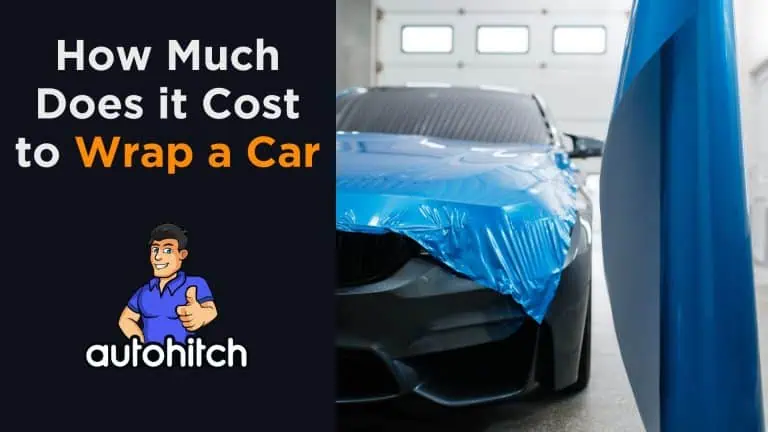Recently my paint was fading a bit and I was considering getting a wrap, because frankly, they look pretty freakin cool.
So, I searched: How much does it cost to wrap a car, and this is what I found:
The first thing to point out might be obvious, and that’s that the cost to wrap a car can vary significantly depending on the type of car you have and some other factors. Here’s a quick overview:
| Vehicle Size | Average Cost Range |
|---|---|
| Compact Car | $2,000 – $3,500 |
| Sedan | $2,500 – $4,500 |
| SUV/Truck | $3,500 – $6,000 |
| Luxury/Exotic | $5,000 – $10,000+ |
What Determines the Cost of a Car Wrap?
The main factors that influence the cost of wrapping a car include the vehicle’s size, the vinyl wrap material quality, design complexity, and whether it’s a full or partial wrap. Let me explain these factors in more detail.
| Factor | Typical Cost Range |
|---|---|
| Vehicle Size | $2,000 – $6,000 for a standard car/truck |
| Vinyl Type | $500 – $5,000+ for premium vinyls |
| Design Complexity | $500 – $2,000+ for custom designs |
| Labor | $1,000 – $3,000+ for professional installation |
| DIY vs Professional | $300 – $1,000 for DIY, much higher for professional |
1. Vehicle Size
Larger vehicles like SUVs, trucks, and vans require more vinyl material and labor time, resulting in higher costs compared to smaller cars. The surface area to be covered plays a significant role in determining the overall expense.
2. Vinyl Wrap Material Quality
The quality of the vinyl wrap material can greatly impact the cost. Entry-level vinyls can cost $2-$5 per square foot, while premium cast vinyls with special finishes like chrome or carbon fiber can exceed $20 per square foot (See more below).
Premium cast vinyl wraps from brands like 3M, Avery Dennison, and Oracal are more expensive but offer superior durability, conformability, and color options.
Entry-level calendered vinyl wraps are more affordable but may not last as long or provide the same level of quality.
3. Choosing DIY vs Professional Installation
Most people decide to go with professional installation by an experienced wrap shop to ensure proper application and lasting results.
However, DIY wraps can save a lot on labor if you have the time, tools, and patience.
Professional installation adds $1,000 – $3,000+ to the total cost but provides expertise and a warranty.
DIY wraps require just the vinyl cost ($300 – $1,000 for most cars) but are very challenging, especially for beginners.
4. Types of Car Wraps
There are several common types of car wraps to consider and the cost varies significantly:
Color Change Wraps
The most popular option is a full solid color change, transforming the vehicle’s exterior appearance. Costs range from $2,000 – $6,000 typically.
Custom Graphic Wraps
These feature custom logos, designs, or vehicle advertising graphics. Pricing depends heavily on design complexity but often starts around $3,000+.
Chrome/Carbon Fiber Wraps
Premium vinyls mimicking chrome, brushed metal, carbon fiber, etc. Cost $4,000 – $10,000+ due to expensive vinyl. Paint Protection Wraps A transparent vinyl coating that protects the original paint job. Around $2,000 – $5,000 for most vehicles.
Paint Protection Wraps
A transparent vinyl coating that protects the original paint job. Around $2,000 – $5,000 for most vehicles.
5. Full vs. Partial Wrap
A full vehicle wrap, which covers the entire exterior surface, is more costly than a partial wrap that only covers specific sections like the hood, roof, or doors. Partial wraps can range from $500 to $2,500, depending on the coverage area.
Wrapping a Car vs. Painting
The general consensus seems to be that getting a car wrapped is often preferable to getting a full new paint job for several reasons:
- Cost: Car wraps are typically much more affordable than a full paint job. A quality wrap can cost around $2,000-$5,000, while a high-end paint job can easily exceed $10,000.
- Reversibility: A car wrap is essentially a large vinyl sticker that can be removed later to restore the original paint. A new paint job is permanent.
- Customization: Wraps offer virtually unlimited color and design options, including matte, chrome, carbon fiber looks that are difficult or impossible with paint.
- Protection: Some wraps, like clear bras/paint protection film, provide an extra protective layer against chips, scratches, etc. while still allowing the original paint color to show through.
However, there are a few potential cons and downsides of wraps compared to paint jobs:
- Shorter lifespan: High-quality wraps may only last 5-7 years before needing replacement, while a good paint job can last over a decade.
- Potential issues: Wraps require very careful installation by experts to avoid issues like edges peeling, air bubbles, etc.
- Resale value: Some buyers may prefer a properly painted vehicle over a wrapped one when purchasing used.
Final Conclusions
It’s important to note that while wrapping a car may be more affordable than a full paint job initially, the wrap will need to be replaced every 3-5 years, depending on the material quality and maintenance. Proper care and maintenance can help extend the lifespan of the wrap.
When considering wrapping your car, I recomend getting quotes from multiple reputable installers in your area to ensure you’re getting a fair price for the desired level of quality and service.
Sources For This Article
- https://blog.wrapmate.com/how-much-do-vehicle-wraps-cost/
- https://www.wrapguysamerica.com/wraps/what-does-a-vehicle-wrap-cost/
- https://www.reddit.com/r/CarWraps/comments/tazixt/is_there_a_pricing_guide_to_how_much_a_wrap_would/
- https://www.reddit.com/r/FocusST/comments/tlx89m/how_much_did_it_cost_to_wrap_your_car/



